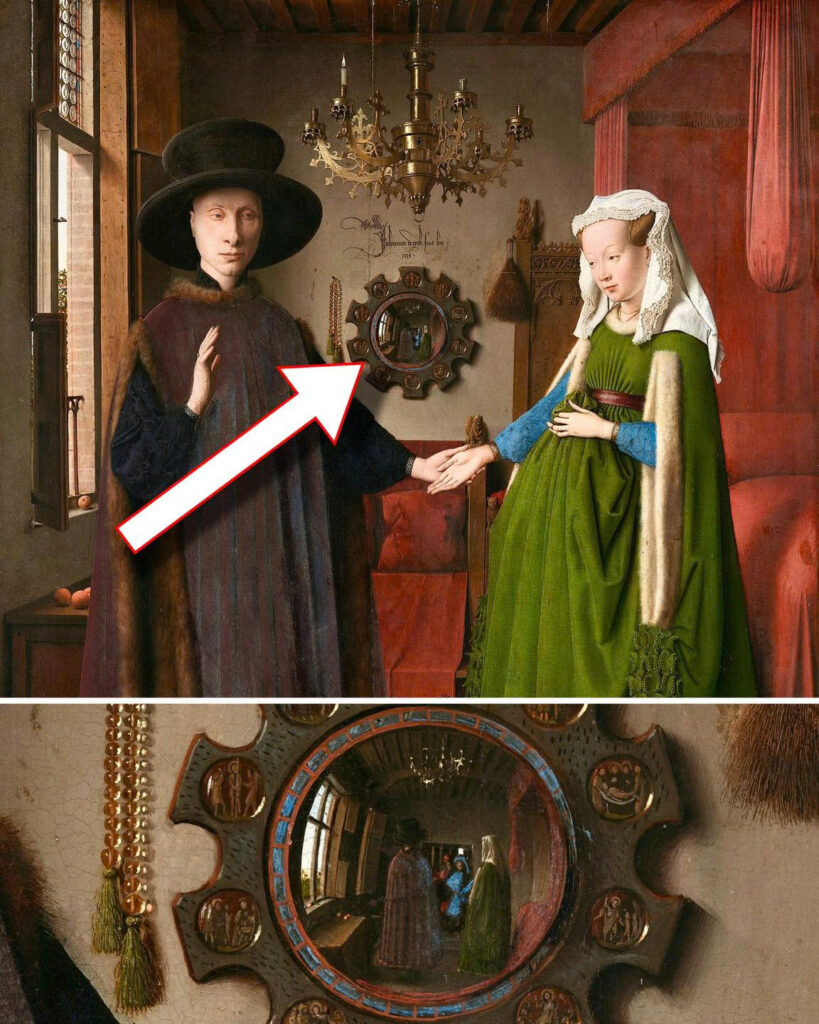The Masterpiece of Jan van Eyck

The Arnolfini Portrait, also known as The Arnolfini Wedding, is a celebrated work of Early Netherlandish painting created by Jan van Eyck in 1434. This oil painting, now housed in the National Gallery in London, is renowned for its intricate details, complex symbolism, and pioneering use of perspective, making it one of the most analyzed pieces in Western art history.
Historical Context and Background

Jan van Eyck emerged as a leading figure during the flourishing Northern Renaissance. The portrait likely depicts Giovanni di Nicolao Arnolfini, an Italian merchant, and his wife in their Bruges home, a bustling commercial center in the 15th century. This full-length double portrait captures the couple in a domestic setting, reflecting their wealth and the artistic innovations of the era. Art historian Ernst Gombrich remarked on how van Eyck’s work represents a shift in artistic practice, capturing reality with extraordinary fidelity.
Artistic Techniques and Innovations

Van Eyck’s revolutionary use of oil paint allowed for a depth of color and detail previously unseen. His technique involved applying multiple thin layers of translucent glazes, which created a luminous effect that enhanced the scene’s realism. The painting showcases van Eyck’s mastery of light, with both direct and diffuse reflections contributing to the depth of space and enhancing its complex iconography.
Composition and Iconography

Set in an upstairs reception area, the room is lavishly decorated, symbolizing the couple’s affluence. Elements like a brass chandelier, an ornate bed, and rare oranges on the windowsill signify luxury. The painting is rich with symbolism, including a convex mirror that reflects not only the couple but also two additional figures, one believed to be van Eyck himself. The mirror’s frame, adorned with scenes from the Passion of Christ, hints at a religious dimension. The couple’s gestures and positioning have sparked interpretations, suggesting themes of domesticity and engagement with the outside world.
Identity of the Subjects
For many years, the couple was thought to be Giovanni di Arrigo Arnolfini and Jeanne Cenami. However, recent findings suggest that the painting actually depicts Giovanni di Nicolao Arnolfini and possibly his first wife, Costanza Trenta. This raises the possibility that the portrait serves as a memorial, explaining details like the single lit candle and the extinguished candle, signifying life and death.
Scholarly Debate and Interpretation

The Arnolfini Portrait has been the subject of extensive scholarly debate regarding its purpose and symbolism. Erwin Panofsky proposed in 1934 that it served as a legal document of marriage, complete with witnesses. While this interpretation is debated, it has shaped the discourse on Early Netherlandish art. Alternative theories suggest the painting depicts a betrothal or a legal arrangement granting the wife authority in business matters. More recent scholarship even posits that it may be a memorial portrait for a wife who had passed away, supported by religious imagery in the mirror frame.
Conclusion

The Arnolfini Portrait remains a captivating masterpiece that continues to intrigue scholars and art enthusiasts. Its complex details, innovative techniques, and rich symbolism offer insights into the lives of its subjects and the world they inhabited. Through this work, van Eyck not only showcases his extraordinary skill but also establishes himself as a pioneering artist of the Northern Renaissance.

